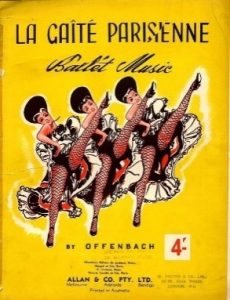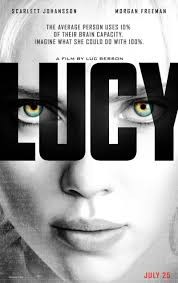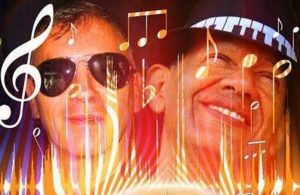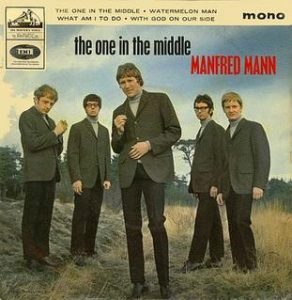By Tony Attwood
Tales of Bob Dylan having taken the music or lyrics for his songs from earlier published works, go back at least to Blowing in the Wind (allegedly taken from No More Auction Block), and have continued ever since to include elements of his Nobel Prize Winning speech, and most recently “False Prophets,” in relation to the 1954 song by Billy “The Kid” Emerson.
The songs have strong links, but within the Dylan song however there are some subtle changes – extending and curtailing the number of bars and beats in the bar – the sort of thing Dylan likes to do, and which changes the feel of the song even if you can’t quite understand what is going on. Plus of course they are about totally different concepts.
Now Bob Dylan hasn’t exactly hidden the use of the original – the key is the same, the feel of the music is very similar, and the musical changes Dylan makes are ones that probably only a musician is going to recognise. Plus if anyone needed an extra hint, Dylan has played songs by the composer of the original on Theme Time Radio Hour.
Dylan, in other words, is clearly stepping out and saying, “this is what influenced me – I’m not hiding anything.”
But if it doesn’t matter that Dylan uses part of the music of a blues song, in his own writing, what’s the difference between this, and the famous George Harrison case when he was ordered to pay $1.5m in damages for having taken the song “He’s So Fine” and turned it into “My Sweet Lord”?
The judge in the Harrison case said in his judgement, “Did Mr Harrison deliberately use the music of ‘He’s So Fine’? I do not believe he did so deliberately. Nevertheless, it is clear that ‘My Sweet Lord’ is the very same song as ‘He’s So Fine’ with different words, and Harrison had access to ‘He’s So Fine.’ This is, under the law, infringement of copyright, and is no less so even though subconsciously accomplished.”
So yes, copying music and lyrics matters legally. In the USA copyright on a composition lasts for 70 years from the end of the year in which the songwriter (or last-surviving songwriter if written by more than one) dies. Billy “the Kid” Emerson is, I think, still alive, aged 92, so the song is still in copyright and will remain so until towards the end of the 21st century.
So copyright matters legally. But does it matter morally? Was Bob Dylan trying to hide the fact that he had borrowed the musical essence of the song, and put new lyrics to it? I’d say probably not, or at least if he was it was a pretty poor way to go about it – to take a song from an artist he himself had promoted on his own radio programme.
Therefore we do need to ask, what is the issue here? Are the people who complain that Bob Dylan is a plagiarist doing so because they want the law upheld, or because they want to see Bob Dylan brought low by being prosecuted, or because of some fundamental moral position that they are adopting? And is some poor blues artist having money that is rightfully his, kept from him, by Bob Dylan?
Of course I can’t tell, because I can’t read minds, and I don’t know if any arrangement was made between Bob and Billy Emerson, but the way the point is put to me by people who don’t care for Dylan’s music very much, seems to suggest that they welcome any way they can find of knocking him. For their commentaries seem to focus on a sudden interest in the moral principle of copyright, which they rarely consider at other times.
Copyright and plagiarism laws exist to ensure that the artist gets the just reward for his labour, just as the man employed to repair my garden fence got rewarded for his work when it blew down last year. But we have to recognise that such laws have boundaries – you cannot claim any rights under any law for an idea. The idea has to be put into practice for it to become something you can protect. My garden fence man did not have to pay a royalty to the first person who thought of putting a wooden fence with vertical slats between each garden.
Copying songs and evolving them into something else has been the tradition in folk music and popular music from the earliest days. Traditional songs and folk songs have appeared and re-appeared in many forms and they are not protected by copyright.
At which point we are left with an array of questions. Where did Billy “the kid” Emerson get that riff? Did it appear on a song before he used it? Did Bob Dylan’s agency discuss the use of the riff with Mr Emerson’s representatives? Is the use by Dylan similar enough to Mr Emerson’s to be a copyright infringement?
Now to that last point you might say, “They sound just the same”, and yes, even allowing for Bob’s fun and games with the length of the bar in odd places, the accompaniment Bob uses is very similar indeed to the original. But the law doesn’t say “the accompaniment has to be the same” for a copyright case to be made. In fact it doesn’t mention accompaniments at all. It talks about “works”.
But there is another legal point, and that is that prior to 1 March 1989 any work created in the USA had to have a copyright note attached to it for its copyright to be something that could be claimed in law. The 1954 song that Dylan has utilised most likely did not have such a copyright notice attached, at least I’ve not found one as I’ve gone a-searching. And so is not registered for copyright. In which case no copyright breach.
However it is also quite possible that Bob Dylan has made a financial arrangement with Mr Emerson to be able to use the accompaniment in his piece. It is also possible that Bob contacted Mr Emerson, played him the new song, and Mr Emerson said, “Man, I can now die fulfilled.”
And here’s another point: is it possible to copyright the accompaniment? Normally speaking accompaniments of songs are not written down at all – it is the chord sequence, the melody and the lyrics that are written down. The accompaniment is made up in the studio.
Yet, it maybe argued, even if there is no legal case that could be brought against Dylan, surely for him to take the accompaniment and not put a note to this effect on the song, is wrong. He ought to admit it!
Well, up to a point maybe. One of the great problems with western music is that it only has 12 notes available. Once you get past the 12 you are simply repeated the note an octave higher or lower. Even more restrictive is the fact that in Western music not every note is available for use – the variety of notes enables us to be able to perform in different keys. This song only uses six notes.
So is a riff – a melody and a rhythm, protected by copyright? Almost certainly not (I say “almost” because I am not aware of any case being fought out in court to give a definitive ruling on this). The song “Making a liar out of me” which I was raving over in my last piece on this site, has a melody based around four notes. Can you copyright that? I can’t see how.
I’m not a lawyer, but I suspect that you need something as nailed-on similar as “My Sweet Lord” to “He’s So Fine” and full compliance with the law in terms of registering copyright for a case to stick.
“But he’s still copying,” claim those who like to knock Dylan – and I think that phrase is interesting because it reminds me of school days. Children do copy when they are supposed not to, and they can be punished for it. But they are copying exactly – the whole thing, (usually the answer) and that is what is wrong.
Let me try an example from another position. There are some people who suggest that Christianity is a copied religion because it took elements from pre-Christian religions and beliefs and incorporated them into Christianity. Those who deny this then might reply that “When one takes the time to study the similarities they suggest, it’s quickly apparent that the differences are actually much greater than any commonalities.”
Now in that definition of copying it seems that percentages come into play – that to be copying over 50% has to be copied. Or maybe just 30% – or was that 80% – I don’t know because the writer of that comment isn’t clear. Dylan has copied some of the music, but the whole essence of the song including the melody, is different.
Which makes the point: how much copying is copying? Is Dylan’s use of the accompaniment of a song enough to make it plagiarism? Or is the accompaniment and some of the melody enough, even when the lyrics are completely different, (along with quite a bit of the melody?
The answer is, “who knows?” For there are no rules. From my modest knowledge of the Copyright, Designs and Patents Act (1988) of which, as a writer in the UK, I have some knowledge, no that is not enough to get a conviction. And we may notice that the “My Sweet Lord” legal case went on for weeks before the judge gave a ruling, even though the two songs were incredibly close in the way they sounded, so we’re not going to resolve this in one little article.
Dylan, in his lyrics and musical accompaniment, uses references from music and literature, and he does this because that is the essence of his work. He takes America’s past and re-works it. And people point the finger.
But did anyone even raise an eyebrow in complaint when Manfred Mann sang “Hubble Bubble Toil and Trouble” in 1964 because the record label did not acknowledge Macbeth? (Actually the only complaint I think came from English teachers saying that the quote actually was, “Double double toil and trouble”.
My point is that in the arts, borrowing goes on all the time and always has done. The work of genius is not measured in originality alone, but also in the taking of what is already there and going further.
To get worked up about Dylan taking musical phrases, lyrics and ideas is to misunderstand not Dylan, but the whole notion of art. Art is about taking what we have in the world, and going a step further. Only occasionally is a work of art utterly original. One might nominate “Guernica” and “Like a Rolling Stone” for originality because they take the form to new places, but not the “Mona Lisa” because that was just another portrait. But that lack of originality does not stop it being a work of utter genius.
To claim that Dylan copies other people’s work is not only to misunderstand what Dylan is doing in terms of his relationship with the past and the present, but to misunderstand the whole of western art, and (if it is mentioned) the copyright acts that exist in various countries. It is like saying Bach’s “48” are copied because the Fugue in each case follows a strictly laid down format.
Dylan examines the world, be it a set of study guide notes on Moby Dick or the novels of Junichi Saga, and reworks what is there into his new context. And indeed at least Junichi Saga had the decency to say he was honored that Dylan had used some of his lines.
Yes things can go too far. Led Zepplin did go too far with “Whole Lotta Love” which really was awfully close to “You Need Love” by Willie Dixon and they settled out of court because it introduced nothing new. The music was very similar and both were about love. That is where there is a problem – not with a referential work such as False Prophet.
If Dylan’s False Prophet is compared with “If loving is believing” we see extensions and new ideas. “You need love” and “Whole lotta love” are songs of the same message, genre, style, approach, affirmation and a dozen other things.
It is as if the people who are complaining here think that songwriting is a sort of writing by numbers. Please allow me, as the composer of one song which has appeared on this site, to confirm. It isn’t. At least it isn’t when you try and create a song that might be worth hearing once or twice.





(The Imagery is that which) also appears in I Dreamed I Saw St. Augustine….
“And a coat of solid gold…I put my finger against the glass”, contrasting the ideal in one’s head with that which one yearns with the pain of reality. Judaism’s earth-bound and Christianity’s heavenly view different somewhat, but the biblical imagery serves Dylan’s Romantic inclinations well.”
Conclusion
And that was it: 1980. An utterly amazing year. An incredible year. The year when against all my expectations, Dylan moved on. The year in which Bob gave us the immortal “Every Grain”, “Caribbean Wind”, “Groom’s Still Waiting”, “Yonder Comes Sin, “Let’s keep it between us”, and beyond even the Caribbean, “Making a liar”. Six amazing, sensational songs which just emerged one after another as he one more time transformed himself into a spiritual rather than a religious person.
So when Bob turns up at my front door one day and says, “Hey Tony that album you made for me, that was OK. Do you want to do a book?” I’ll say “yes Bob of course,” and the words at the start and the end will be
And I’ll look up to see what he thinks of that, but by then, he’ll already be gone down the road, moving on, always moving on.
Untold Dylan: who we are what we do
Untold Dylan is written by people who want to write for Untold Dylan. It is simply a forum for those interested in the work of the most famous, influential and recognised popular musician and poet of our era, to read about, listen to and express their thoughts on, his lyrics and music.
We welcome articles, contributions and ideas from all our readers. Sadly no one gets paid, but if you are published here, your work will be read by a fairly large number of people across the world, ranging from fans to academics who teach English literature. If you have an idea, or a finished piece send it as a Word file to Tony@schools.co.uk with a note saying that it is for publication on Untold Dylan.
We also have a very lively discussion group “Untold Dylan” on Facebook with approaching 5000 active members. Just type the phrase “Untold Dylan” in, on your Facebook page or follow this link
You’ll find some notes about our latest posts arranged by themes and subjects on the home page of this site. You can also see details of our main sections on this site at the top of this page under the picture. Not every index is complete but I do my best.
But what is complete is our index to all the 604 Dylan compositions and co-compositions that we have found, on the A to Z page. I’m proud of that; no one else has found that many songs with that much information. Elsewhere the songs are indexed by theme and by the date of composition. See for example Bob Dylan year by year.